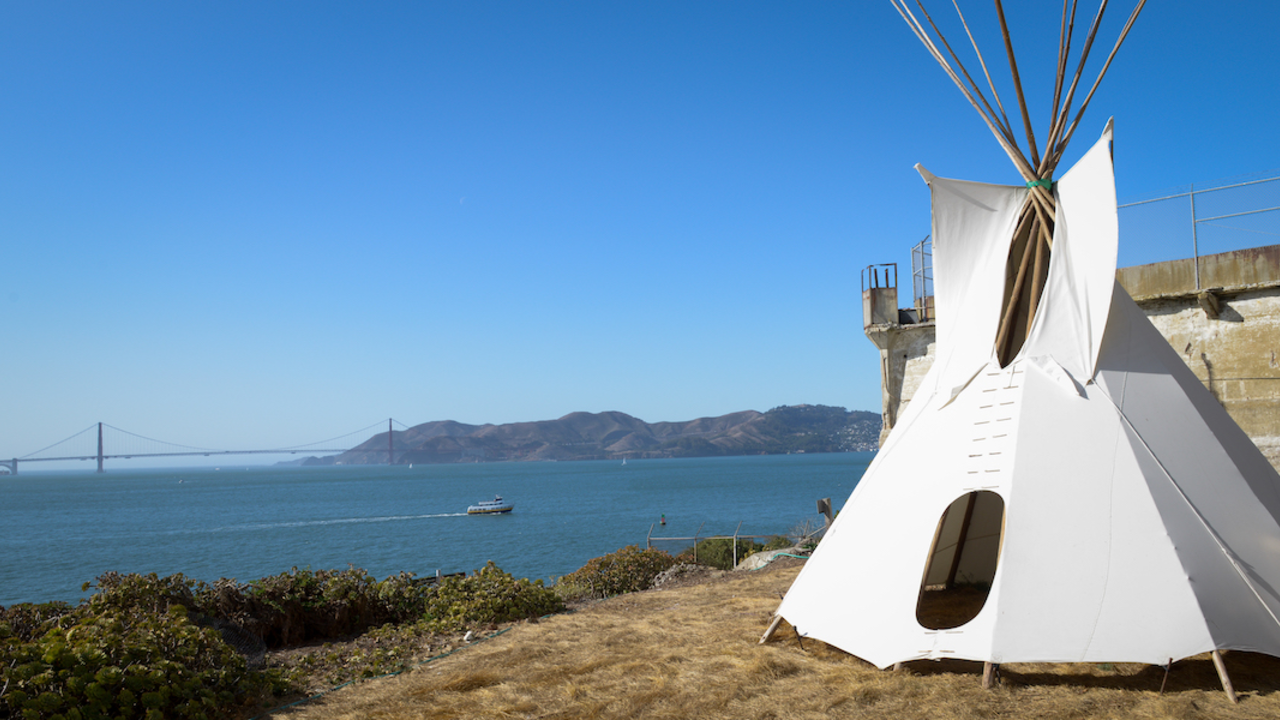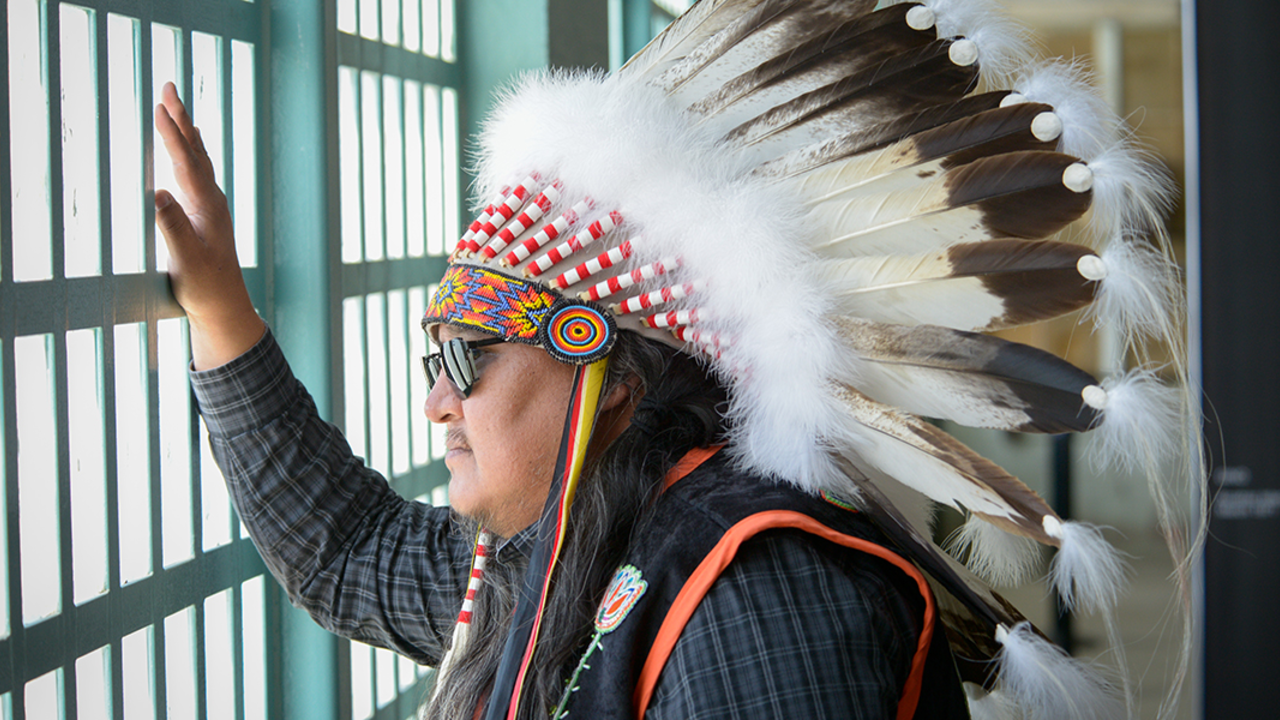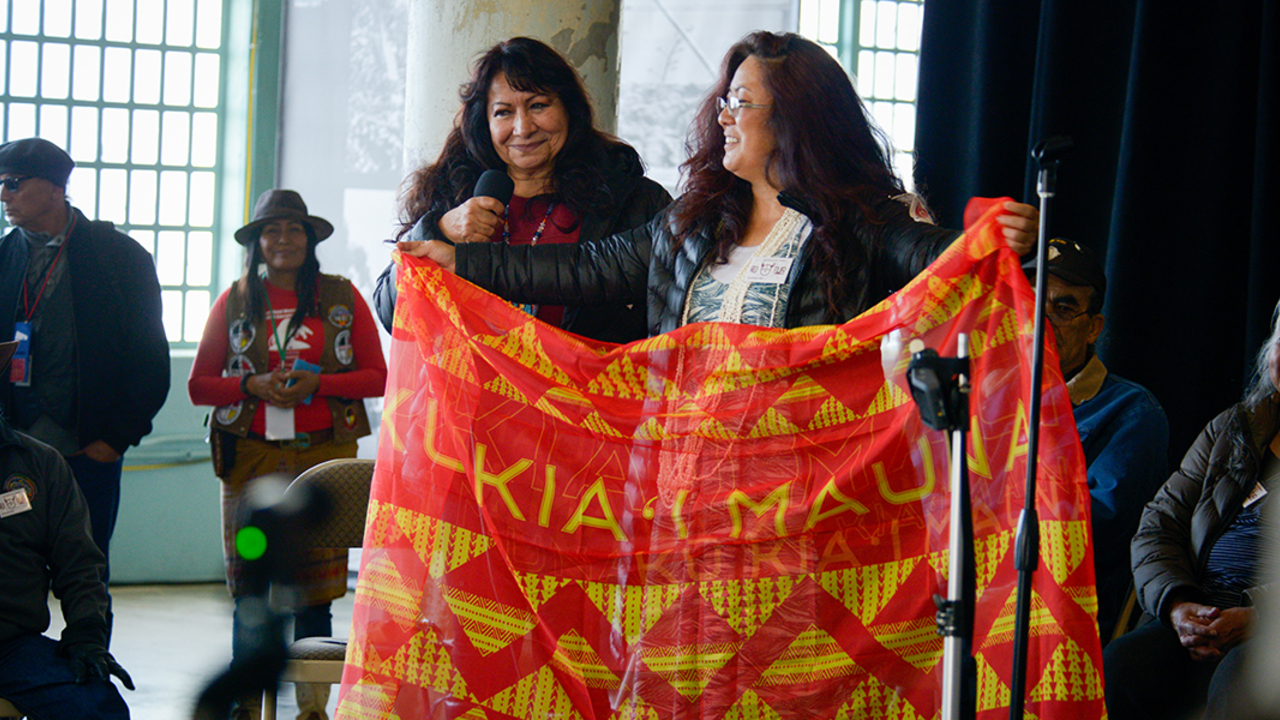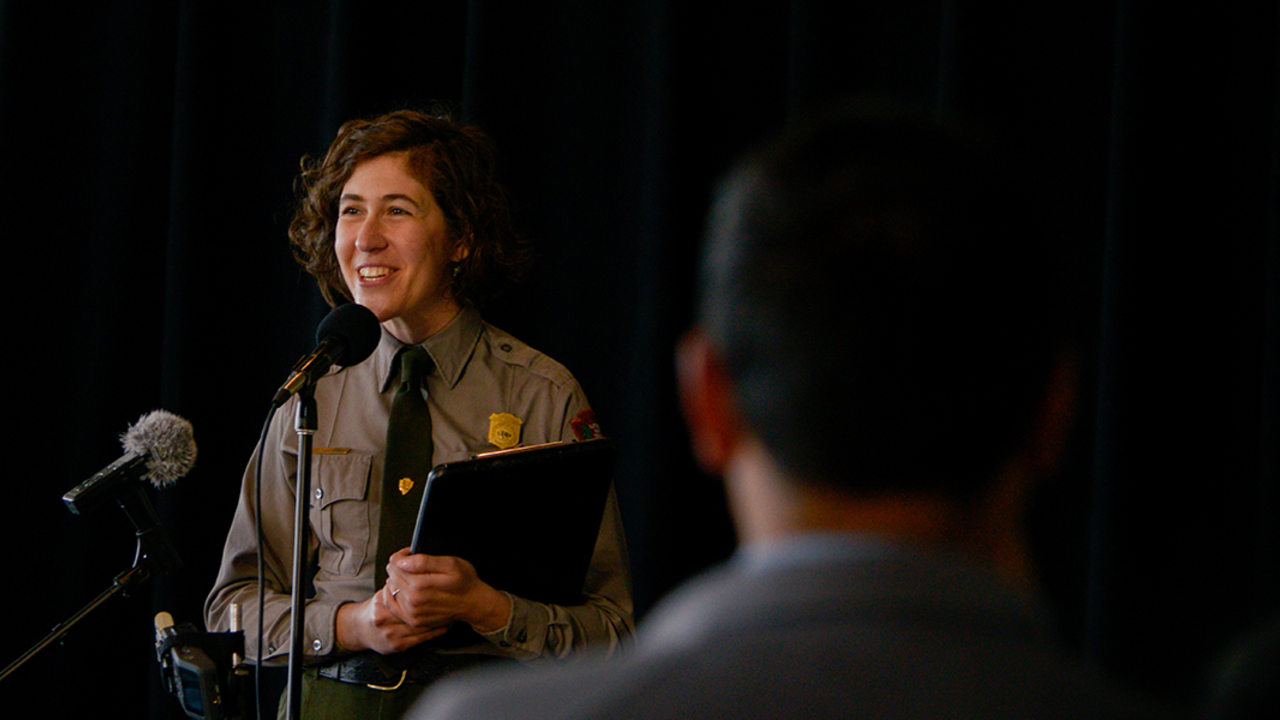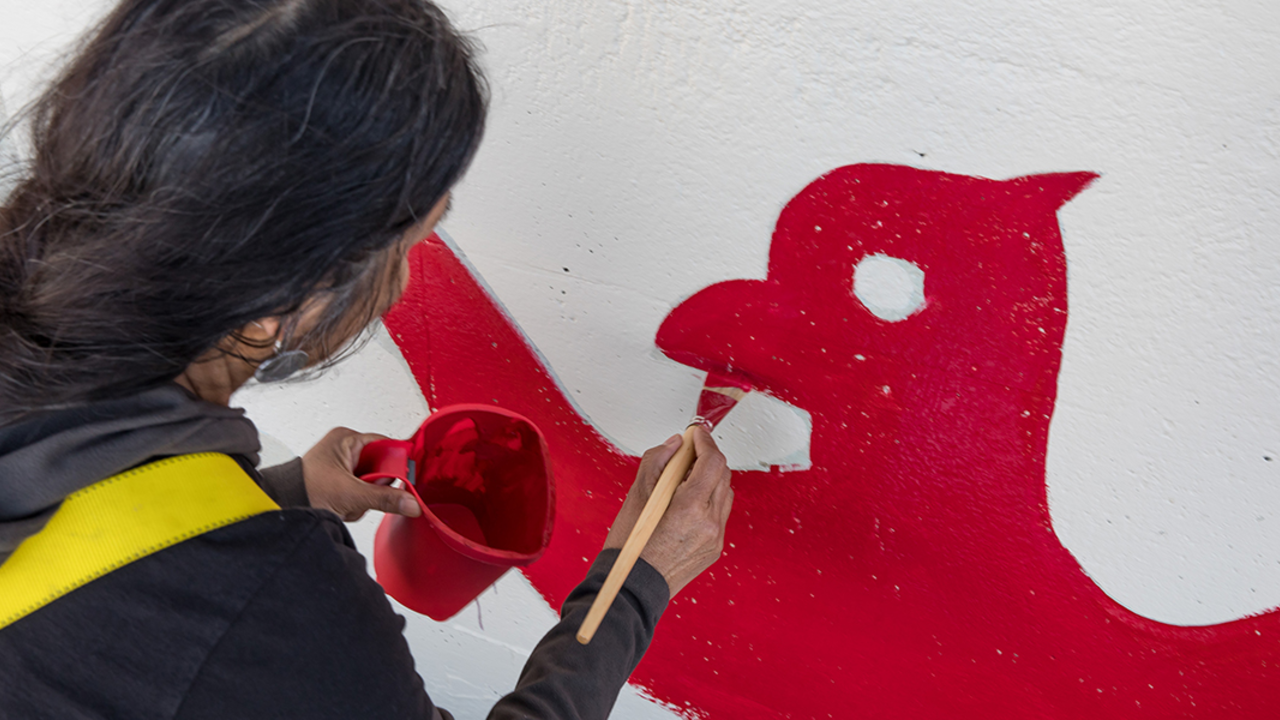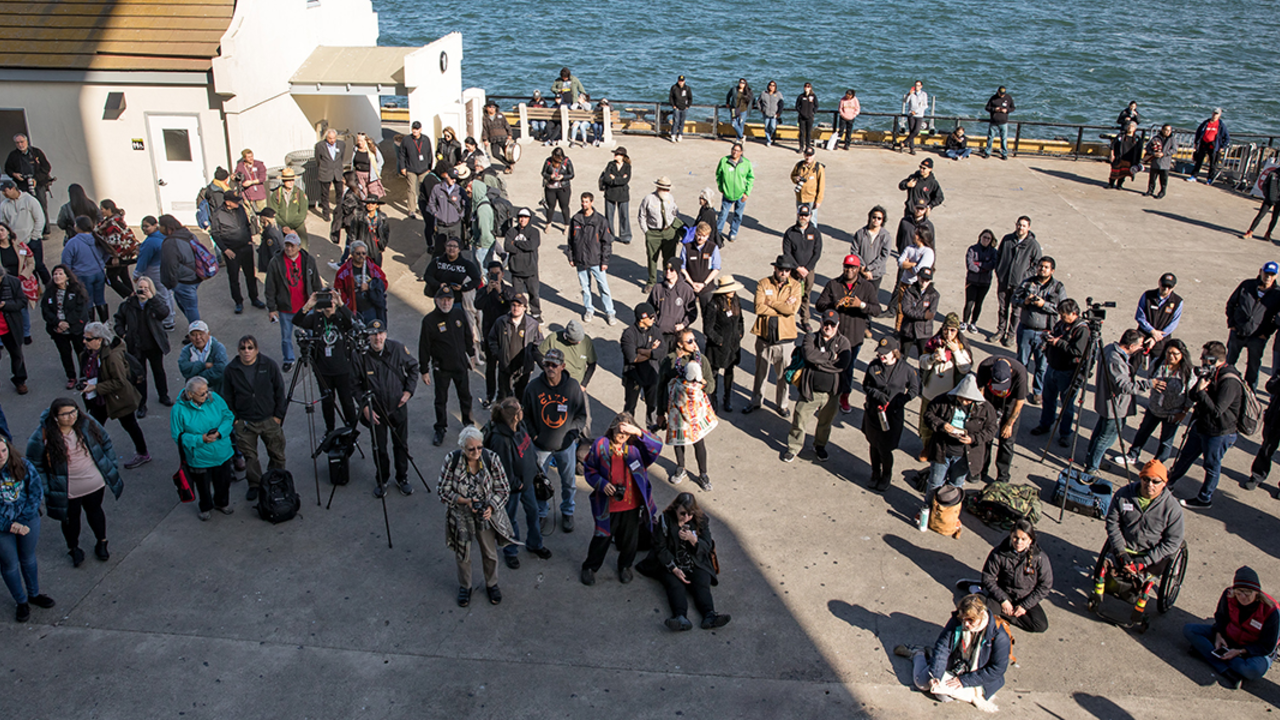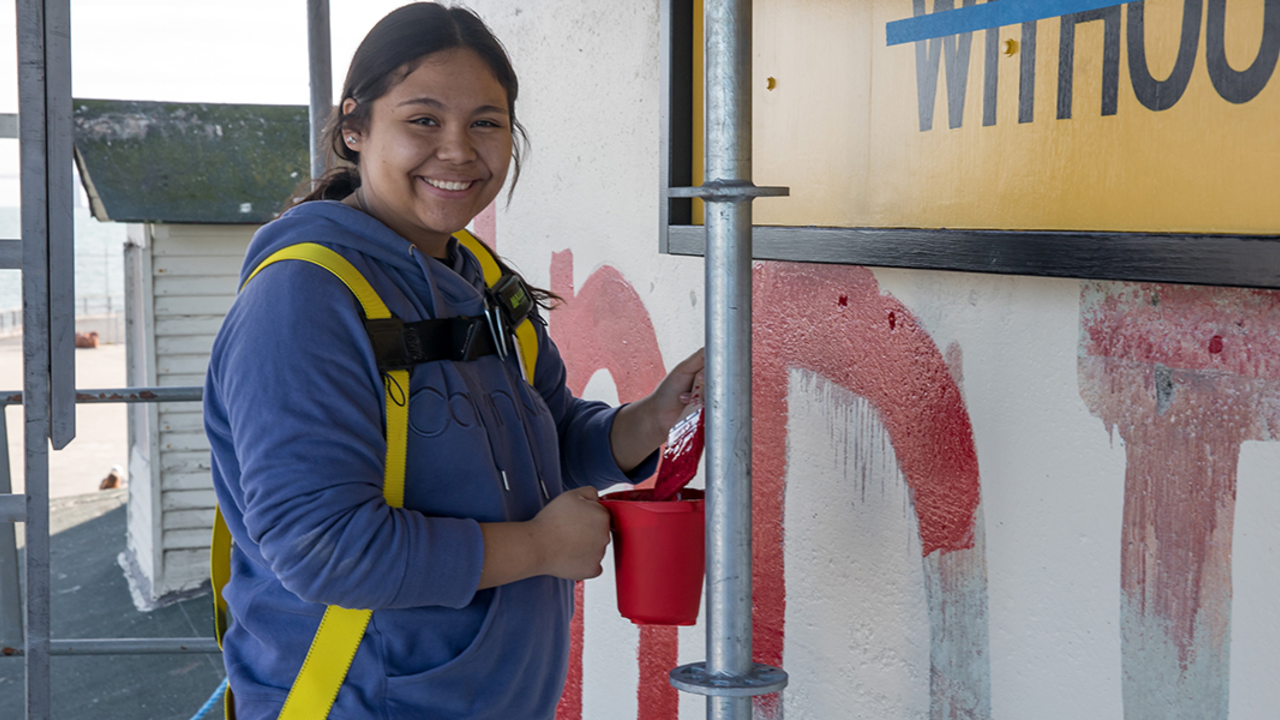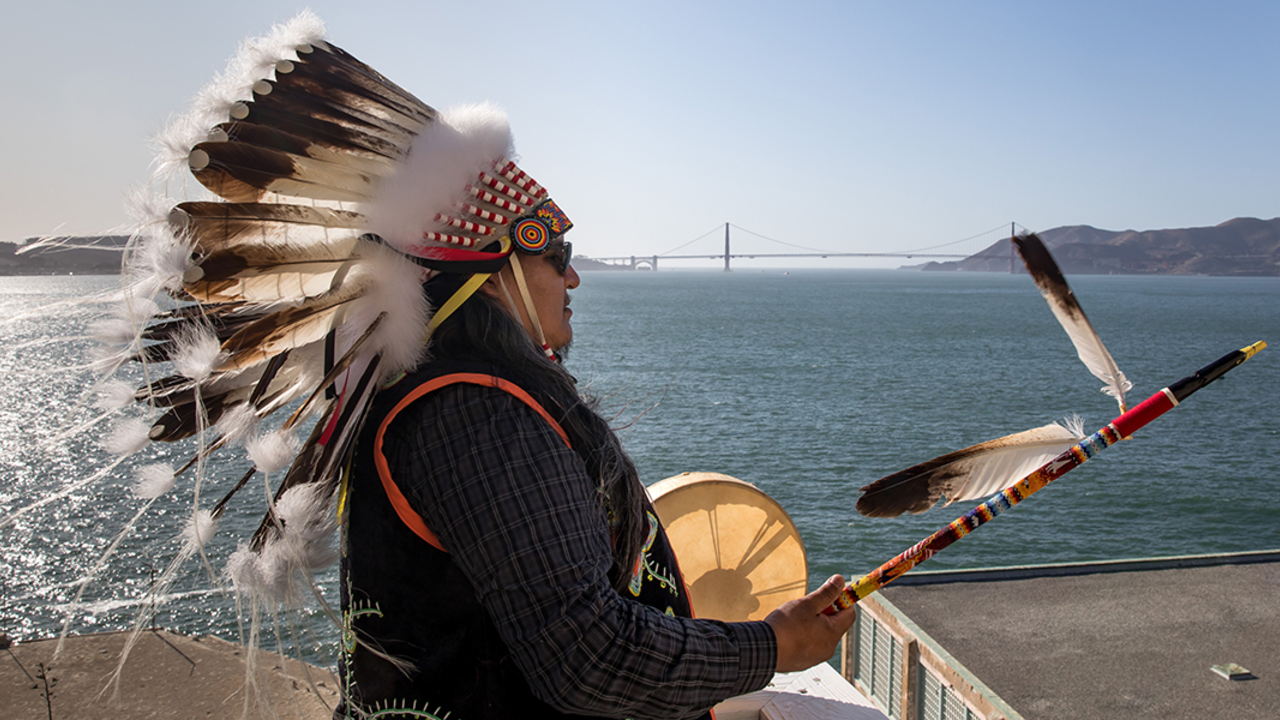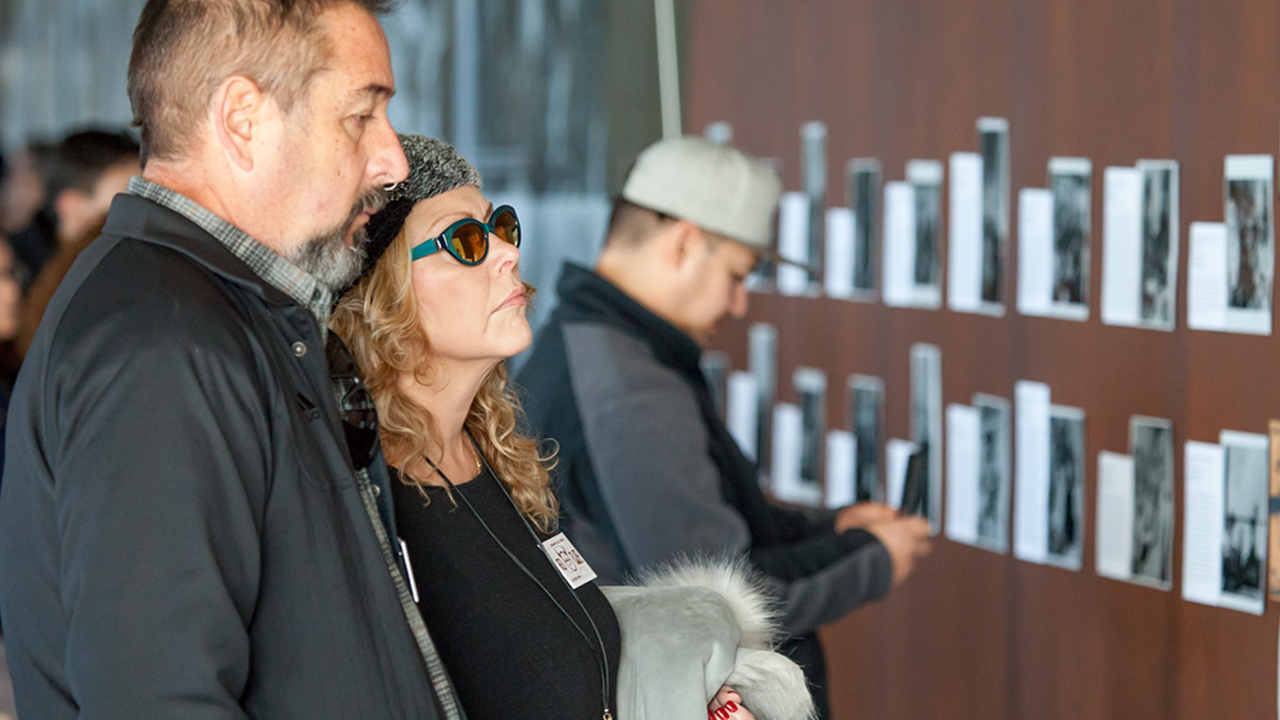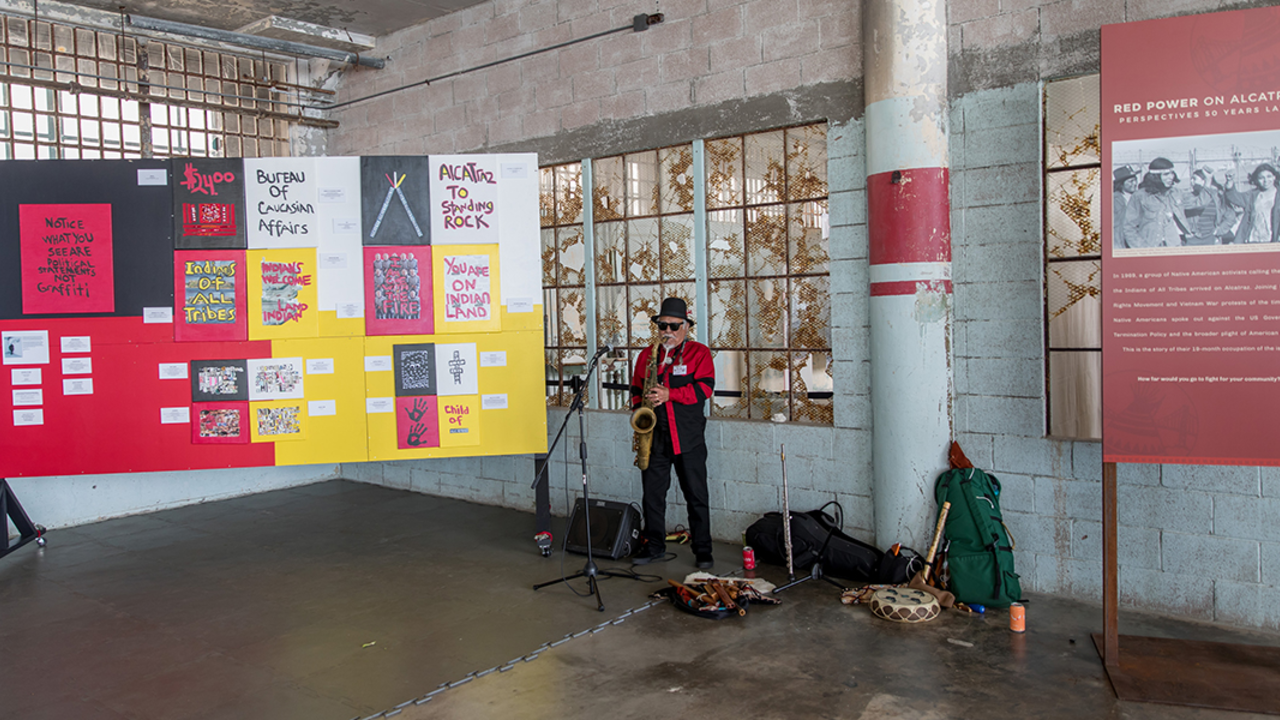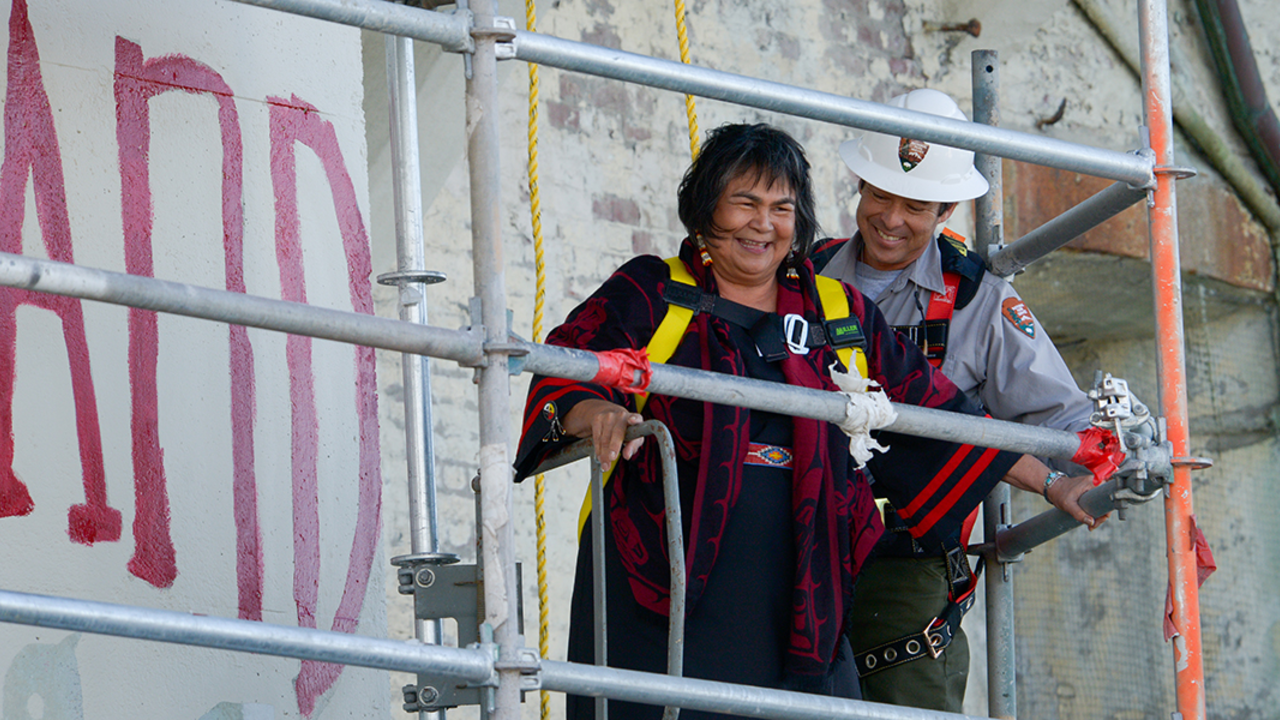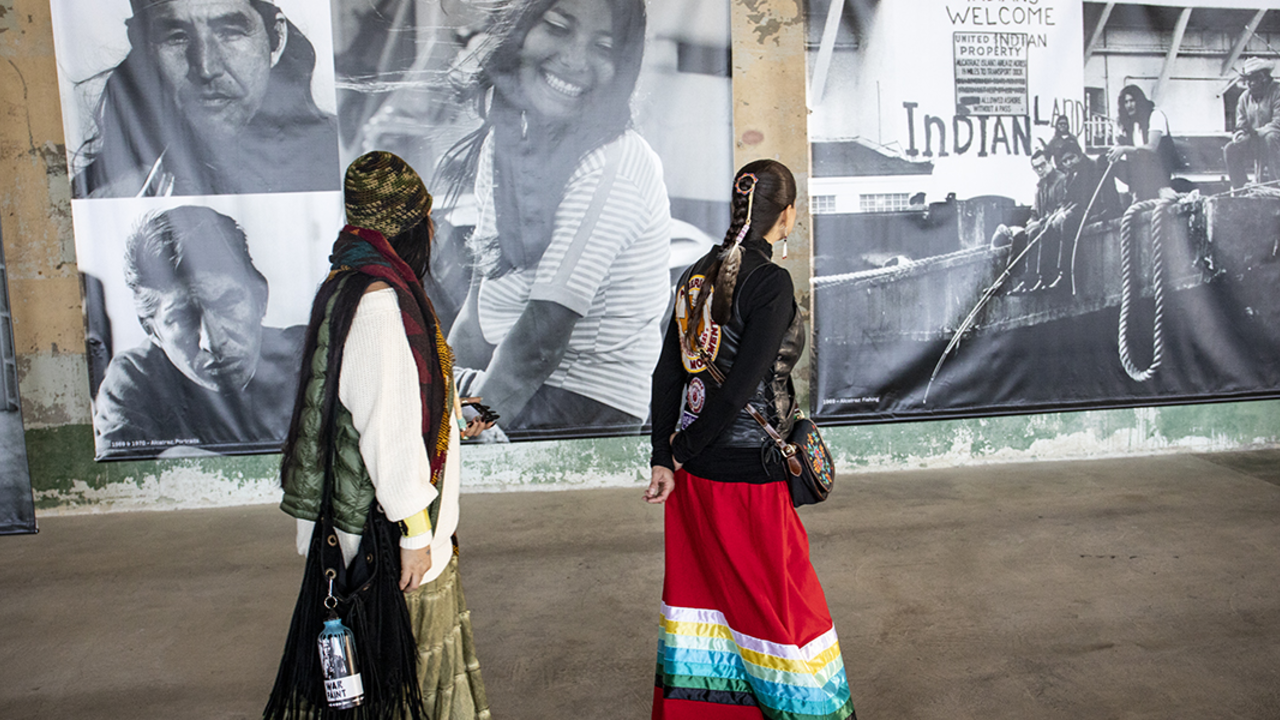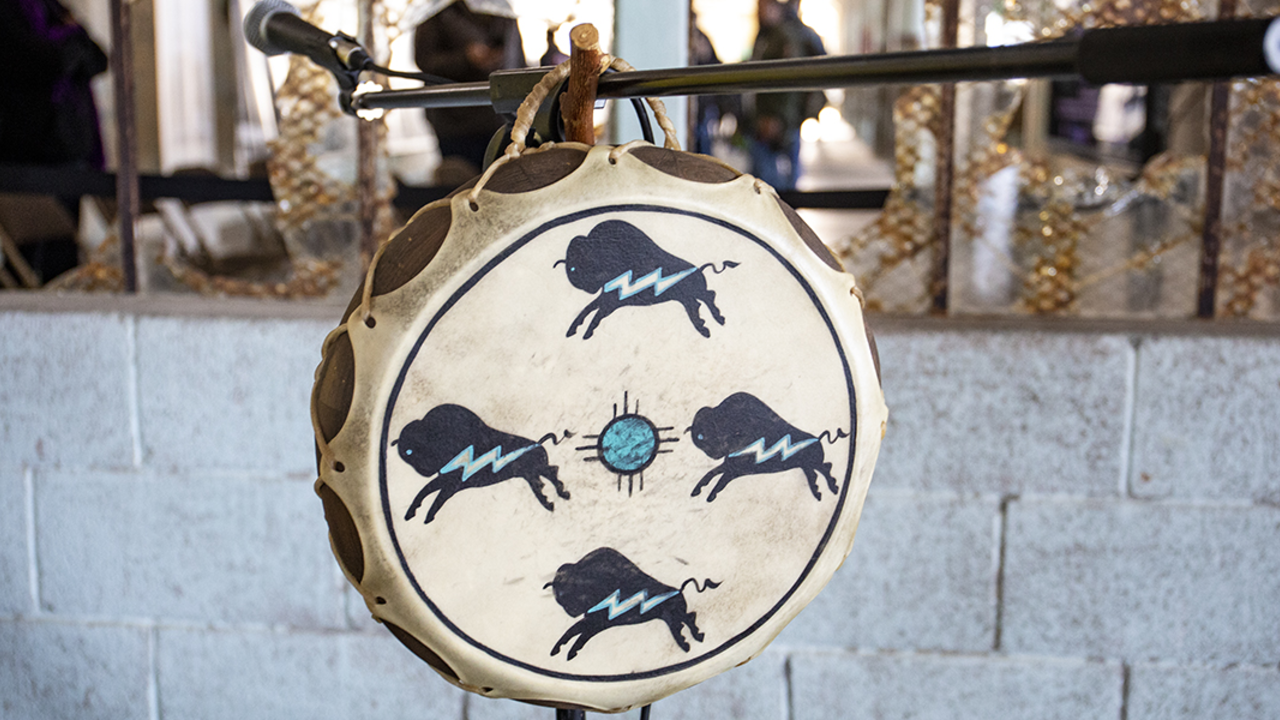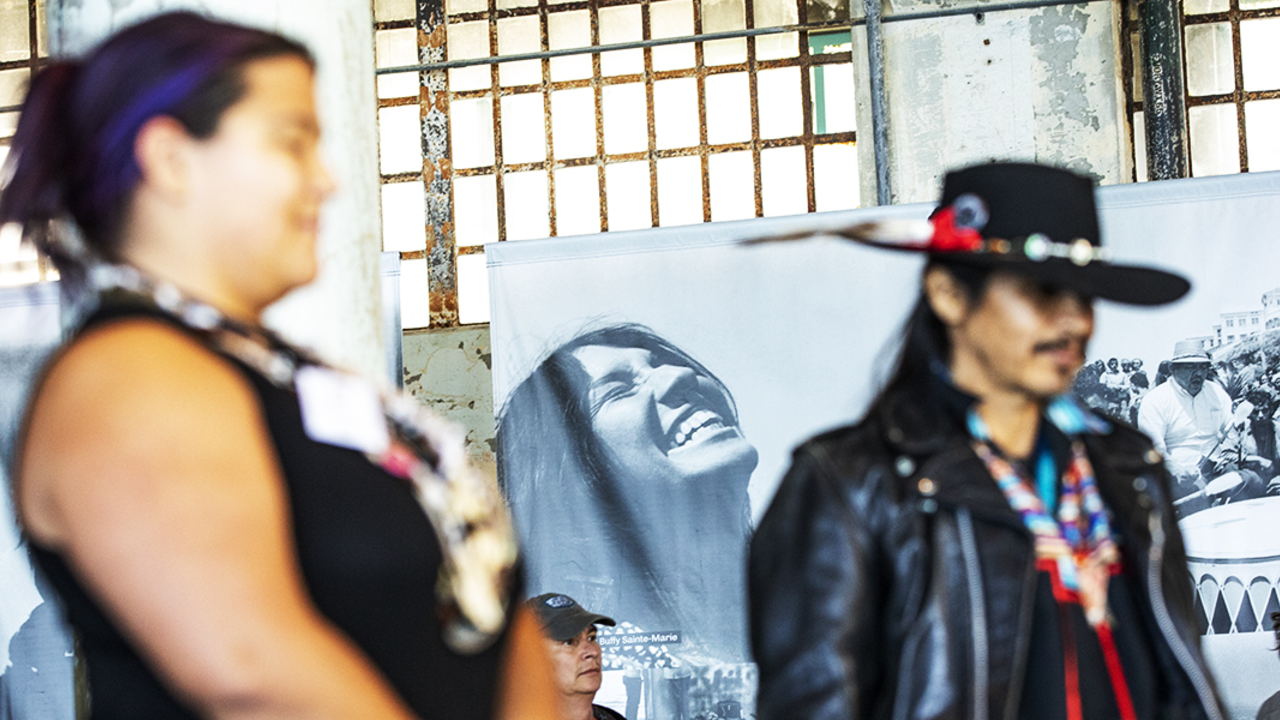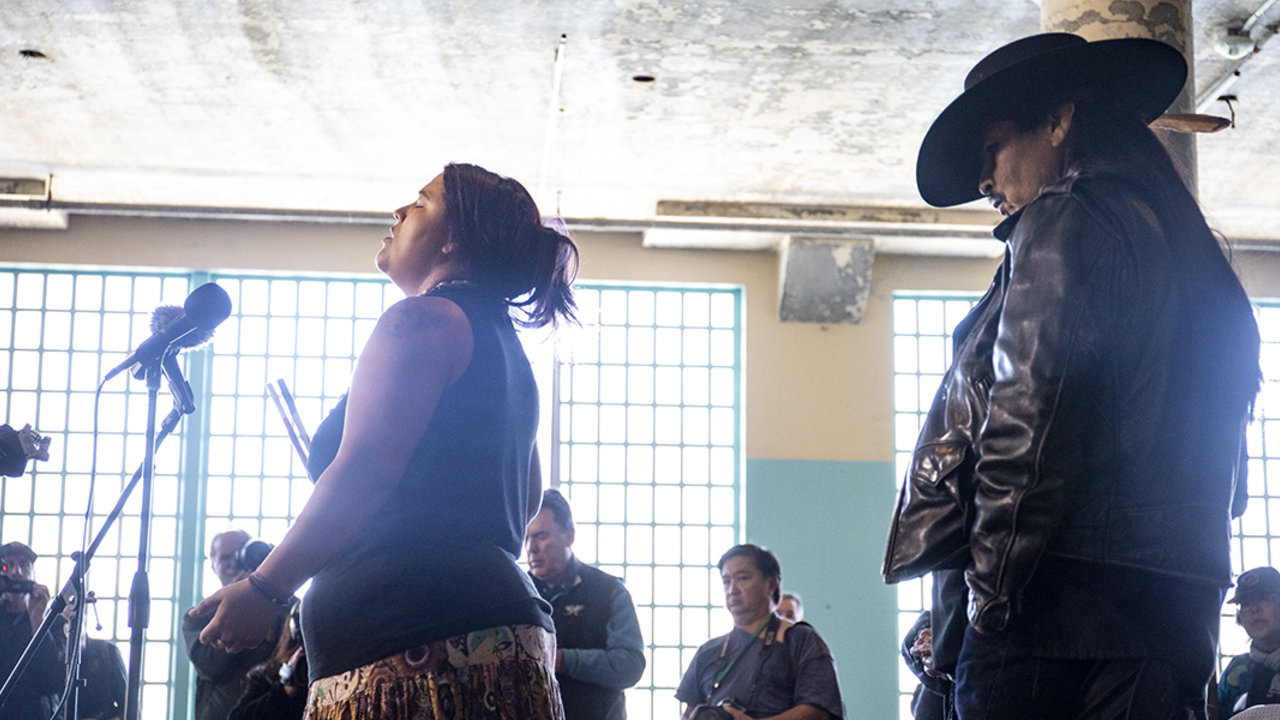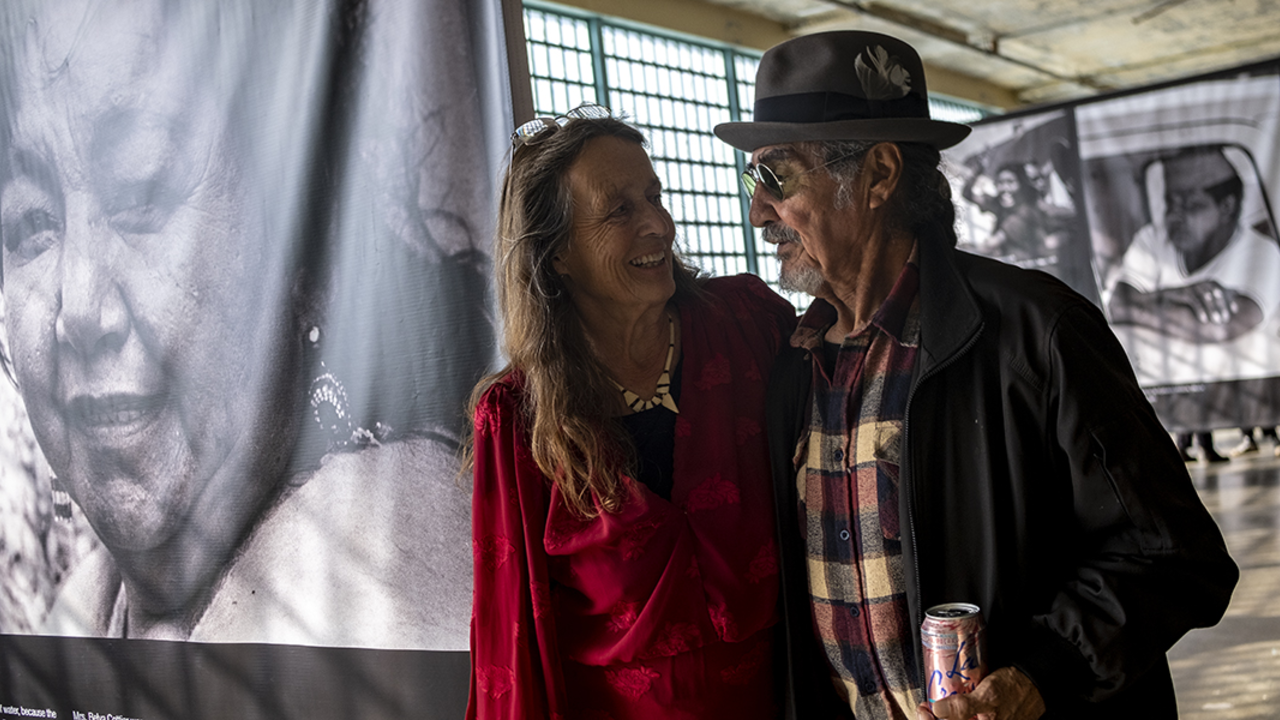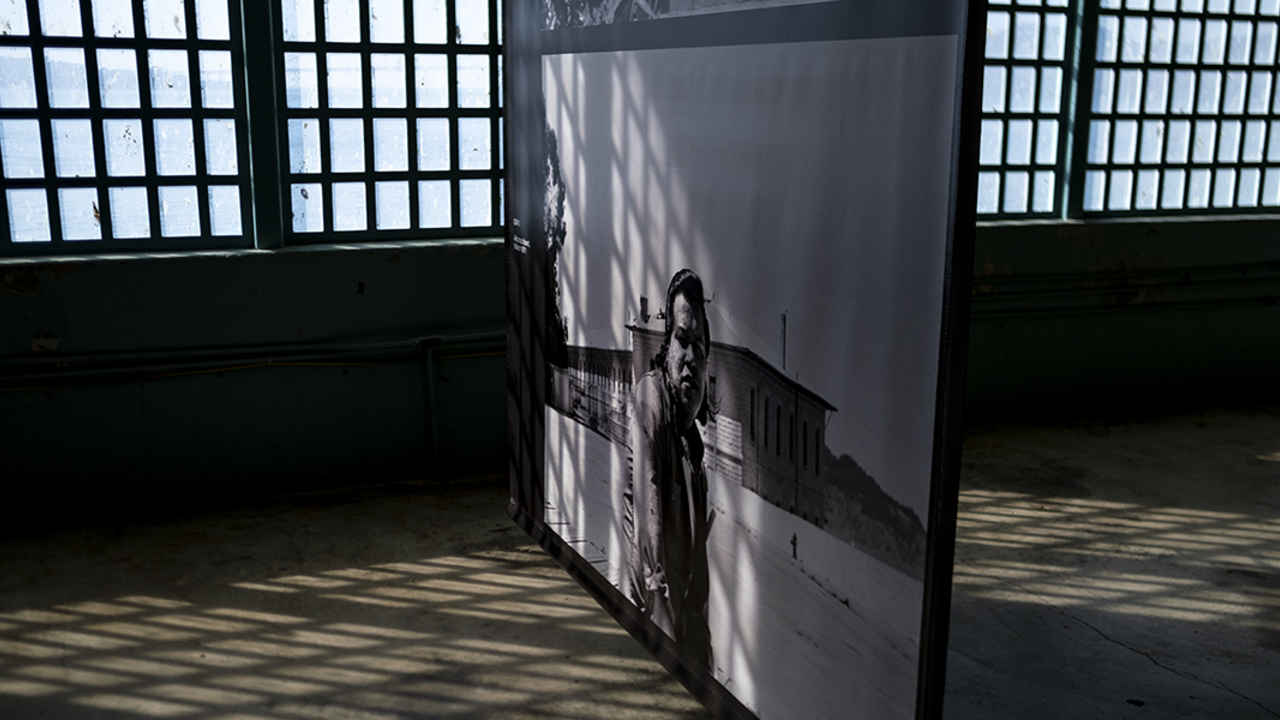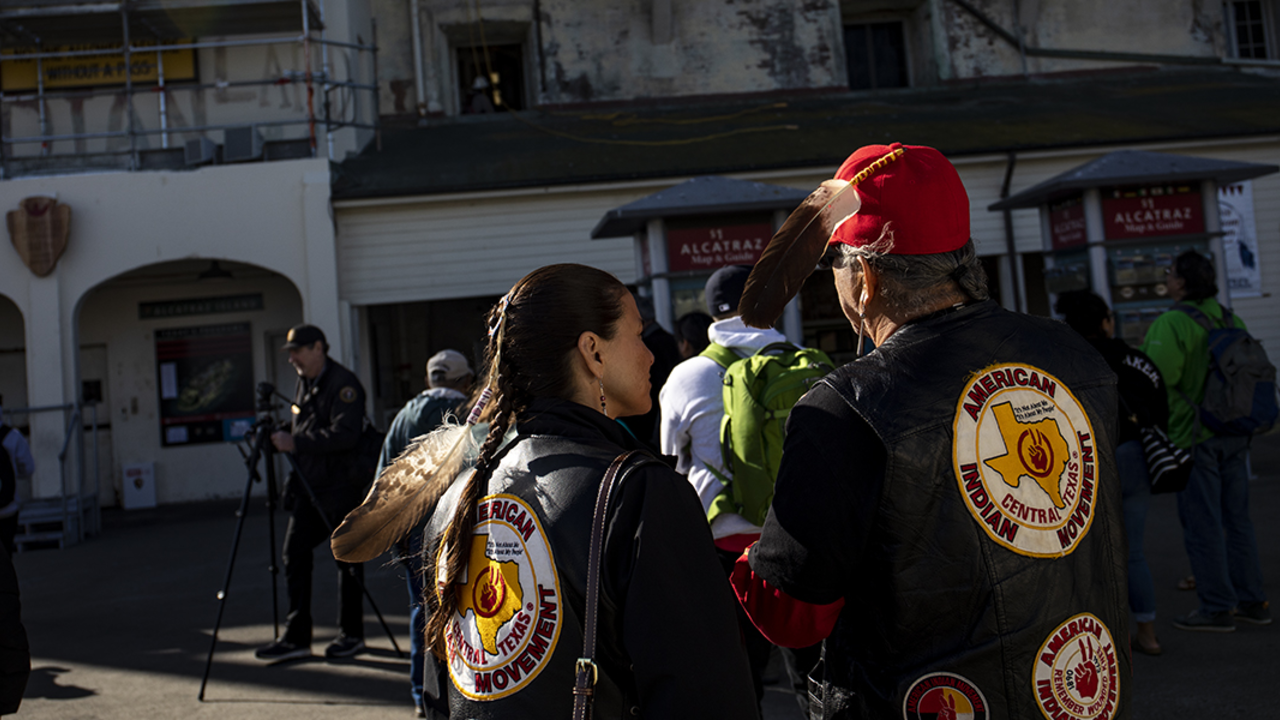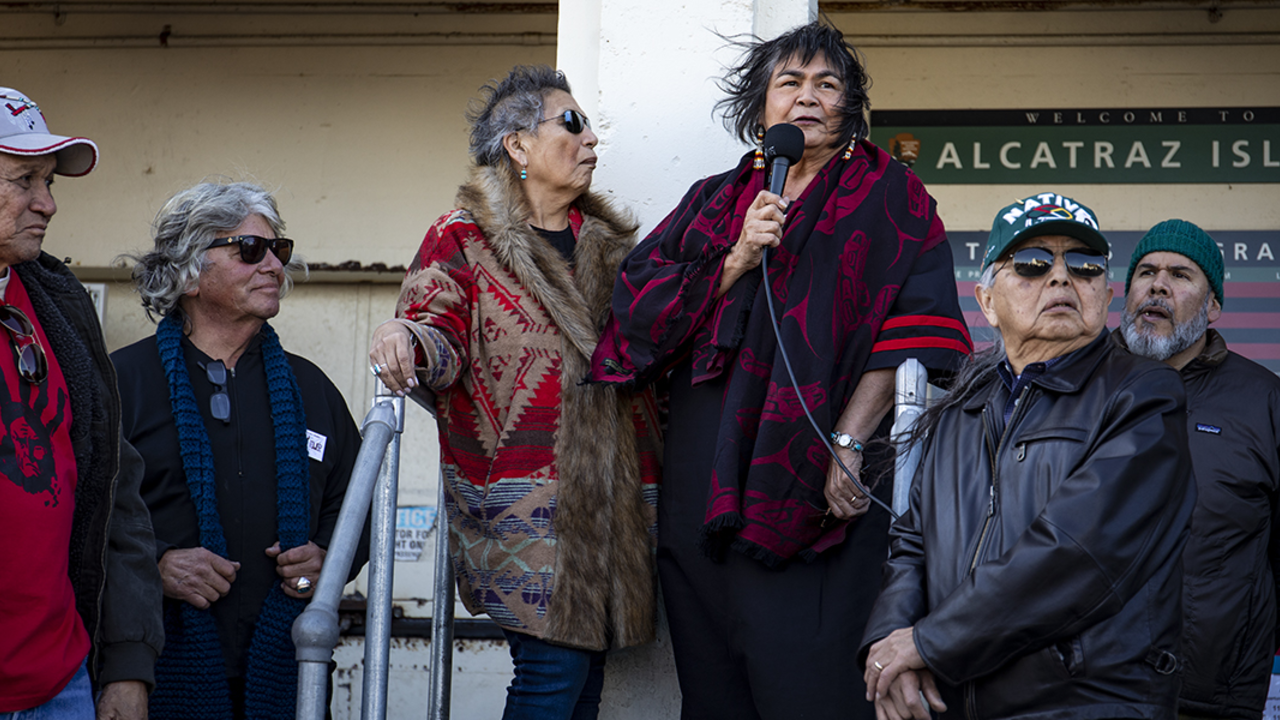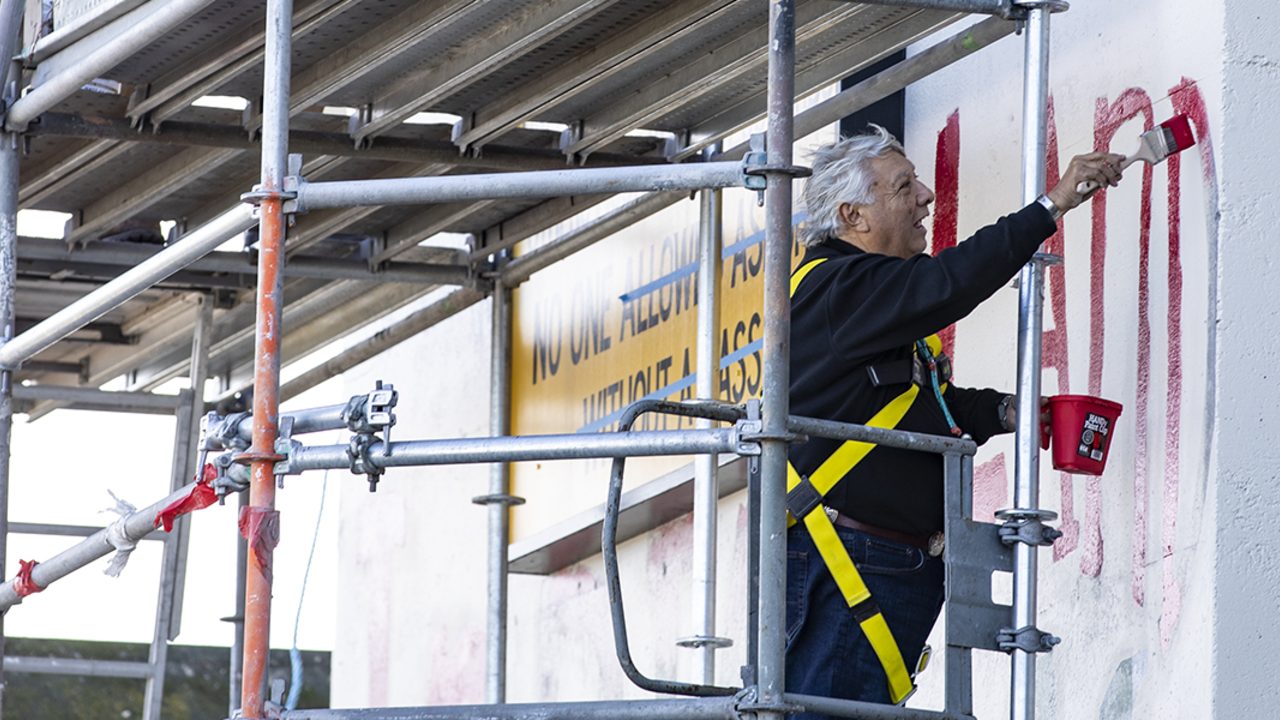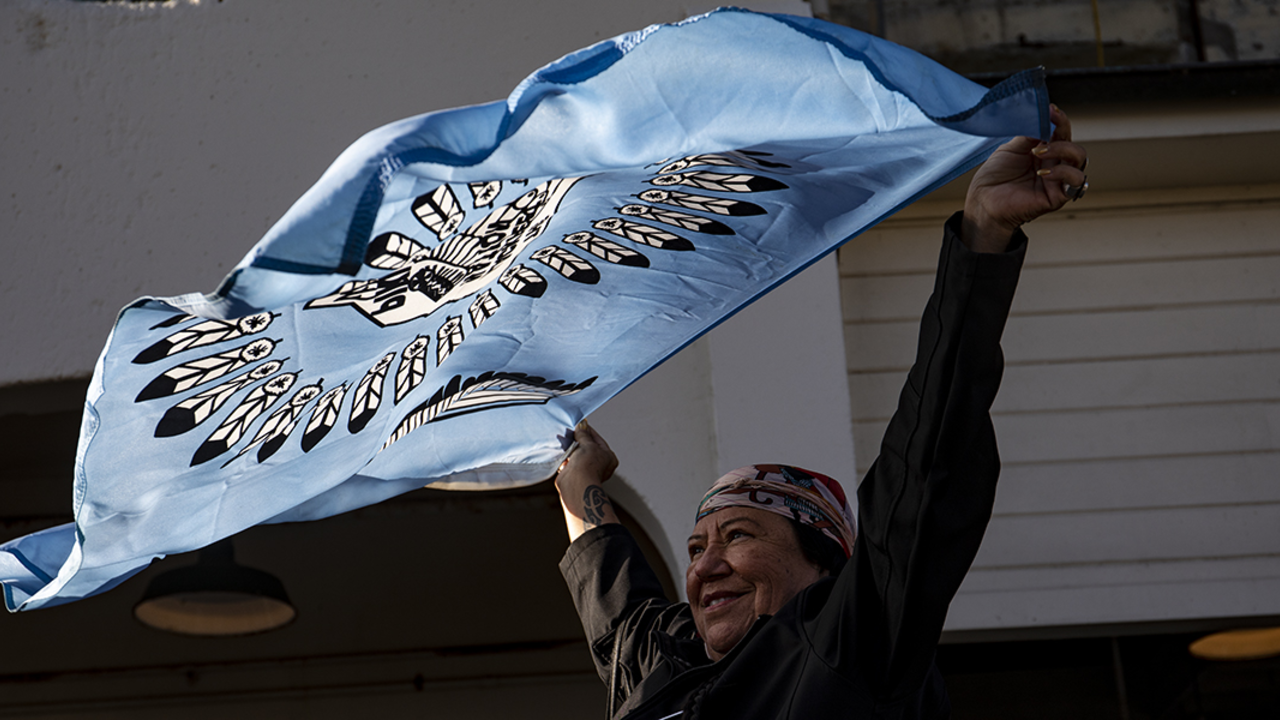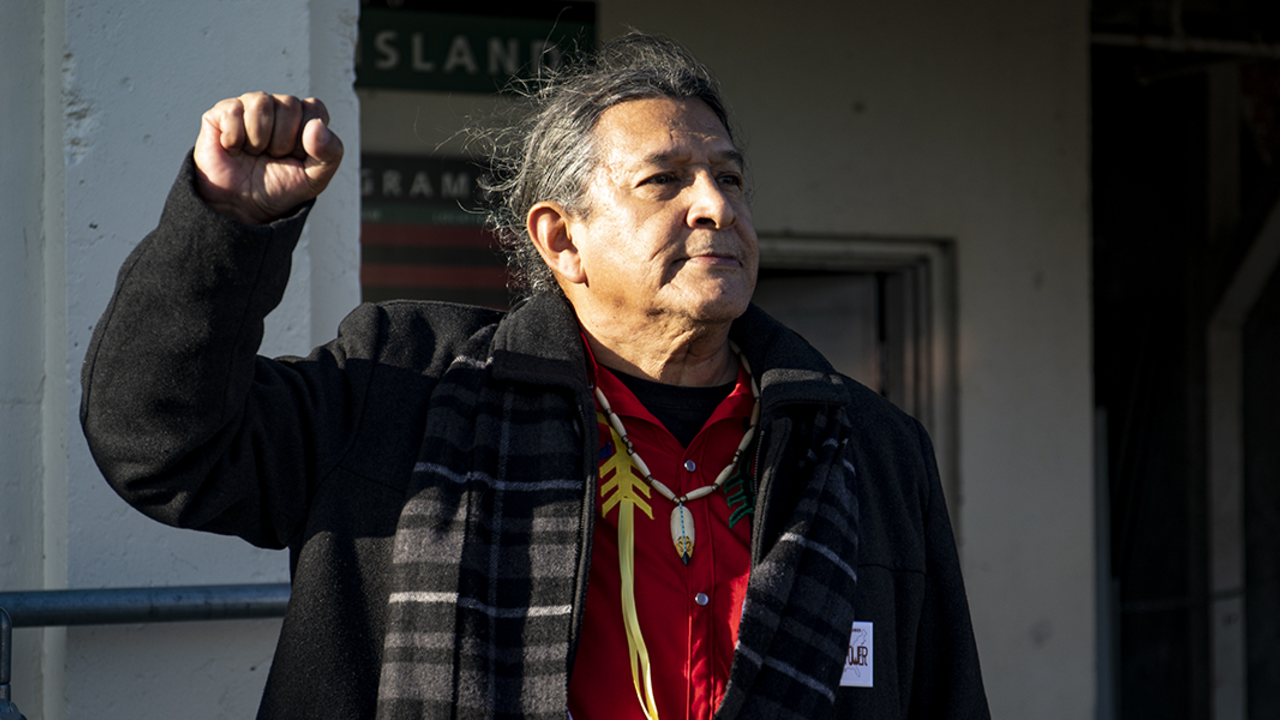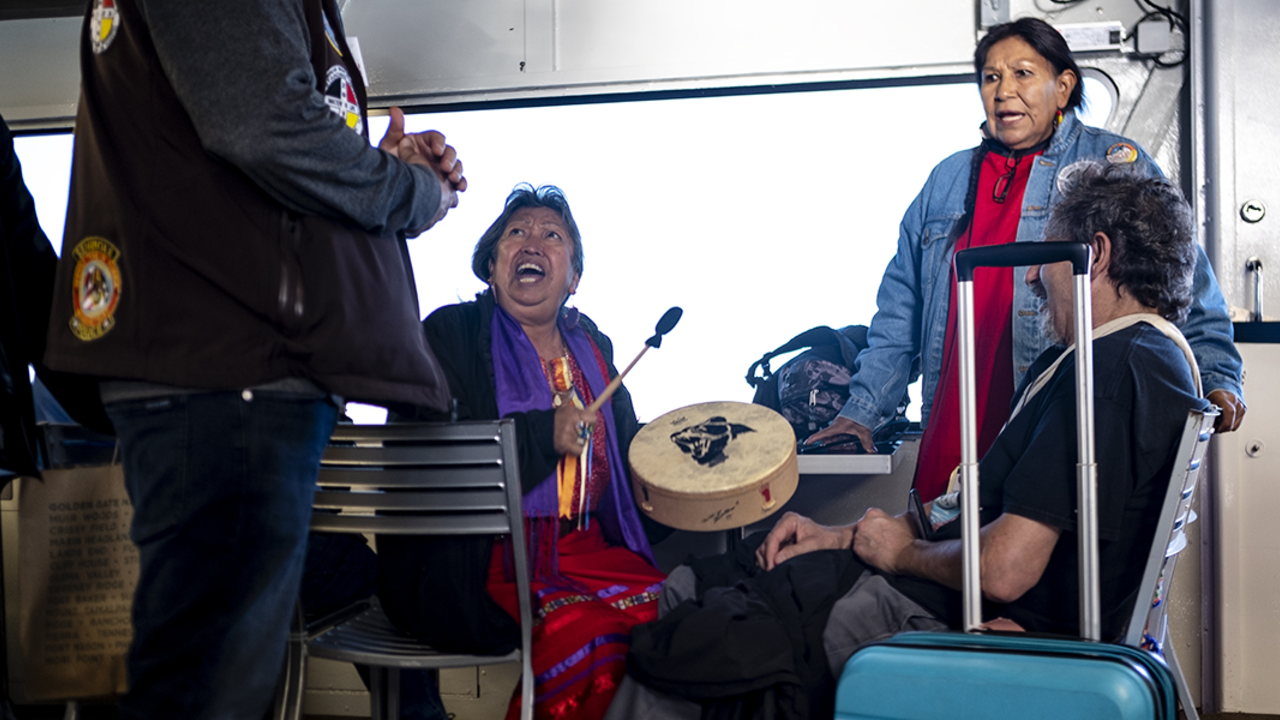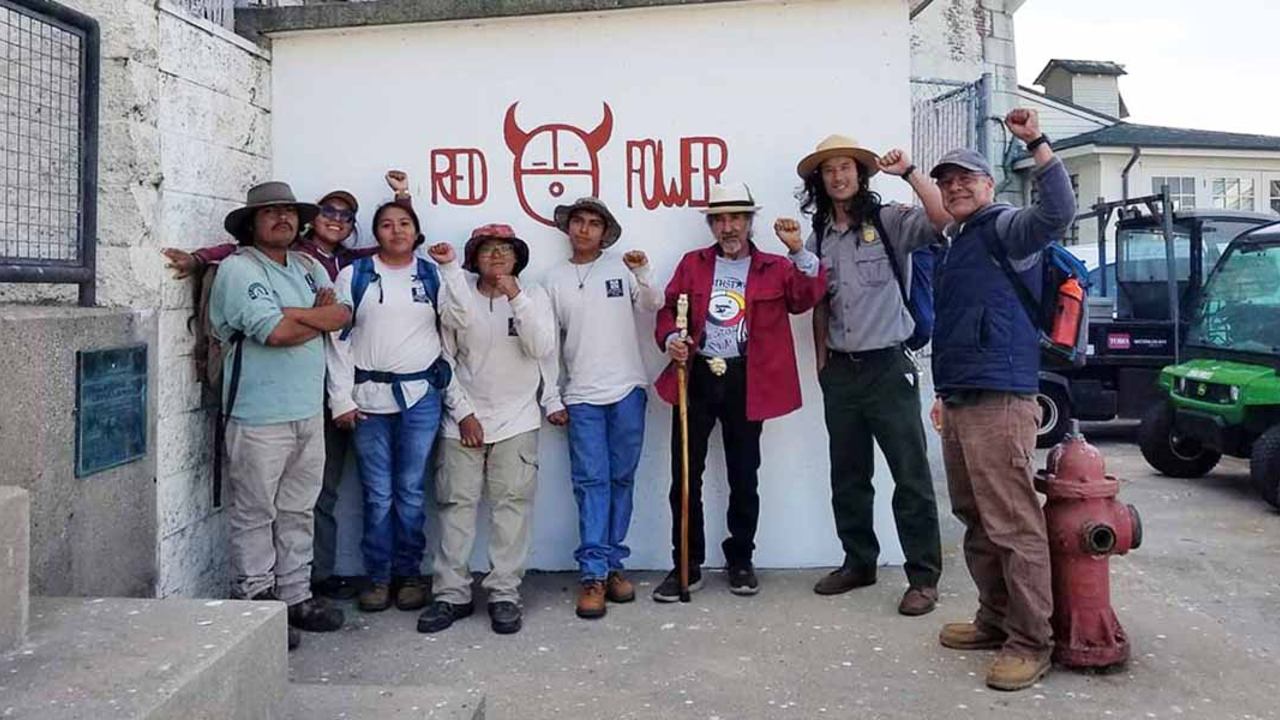November 20, 1969. That day marked the beginning of the Occupation of Alcatraz by the Indians of All Tribes, a key milestone in the history of the island, our country, and the broader Native American civil rights movement. From 1969 to 1971, the 19-month Occupation sparked a nationwide political shift toward self-determination on Native American lands, and pride in the Native American rights movement.
In the fall of 2019, the National Park Service, Golden Gate National Parks Conservancy, and the Indians of All Tribes commemorated the 50th anniversary of the Occupation with various events and Red Power on Alcatraz: Perspectives 50 Years Later, an art exhibit celebrating the legacy of the Red Power Movement.
Here’s what this momentous occasion meant to some of the original occupiers:
Alcatraz as a beacon for indigenous communities around the globe
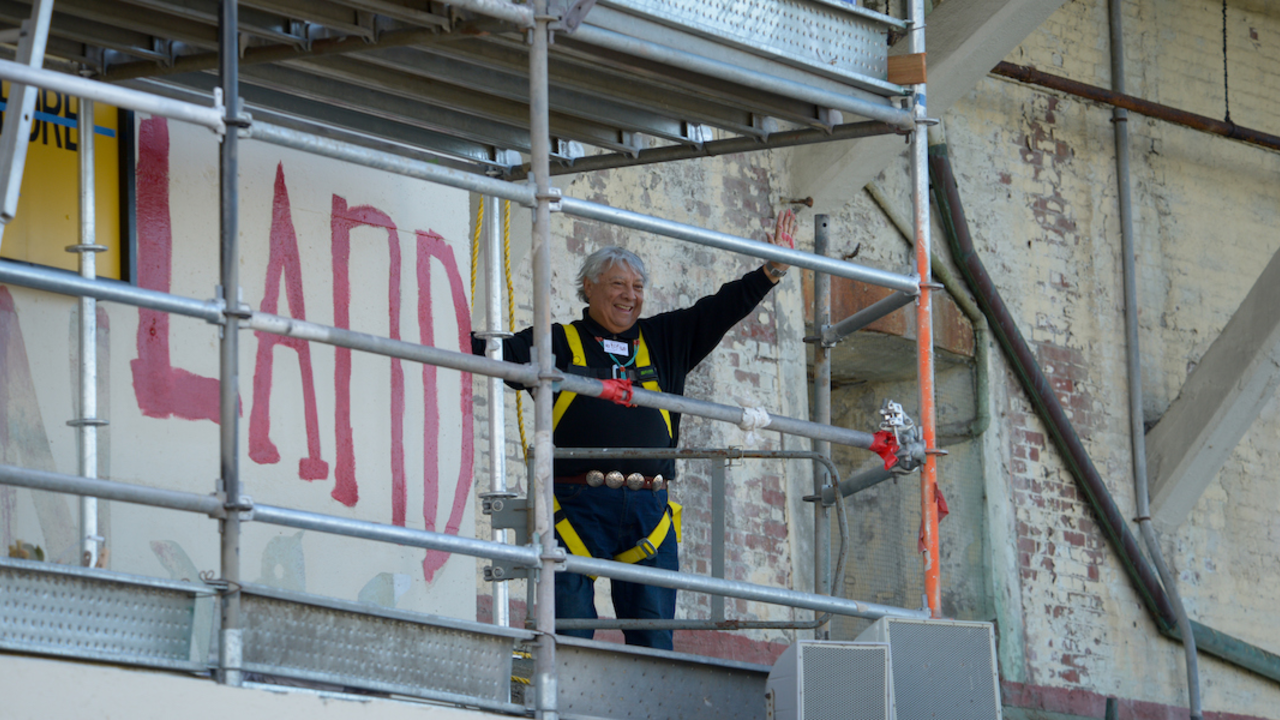
Jonathan Lucero is an Alcatraz Occupier from the Jicarilla Apache Nation of New Mexico and Colorado:
“(The Occupation of Alcatraz) changed the world for Indians. This island, it changed the world because all of a sudden, now we knew where we were."
“We didn’t have the internet. We didn’t know where each other were. We were all scattered like seeds in the wind. We had no idea there were other native people. When Alcatraz happened and they (the federal government) didn’t stop us right in the beginning, (native people) came from all over Canada, from all over the Southwest, all over back east."
“Over the last 50 years, I’ve had 20 or 30 young people come up to me and say, ‘because of what you did, we went to college. We got involved.’”
Jonathan Lucero arrived on Alcatraz a few days after the occupation began in November 1969. Jonathan came to the island after serving time overseas in the U.S. Marine Corps. His mother sent him letters noting the movement brewing in the Bay Area and encouraged him to get involved.
For years, Jonathan never admitted he was Native American due to fear of hate-motivated violence.
“You gotta understand,” he said. “Before 1965, if you told people you were Indian, you were in trouble.”
He arrived on the island shortly after returning from his military service. He was involved with security on the island and was one of the original painters of the political slogans on the building near the Alcatraz Dock.
The Occupation of Alcatraz and the larger Red Power movement empowered Jonathan to be proud of his heritage, like it did and continues to do for so many other indigenous people.
Jonathan lives in the Bay Area and continues to fight for indigenous rights.
Support from all over San Francisco and the world
Jonathan Lucero:
“Most of the restaurants in Fisherman’s Wharf (Tarantino's and all those), a lot of those restaurants have floors in their kitchen that go down to the bottom (to the Bay) for boats to come in and deliver fish. We would pull in there, go up through the kitchen, then diners would see about 10 Indians walking out of the kitchens with backpacks full of supplies.”
Johnny Bearcub Stiffarm is an Alcatraz Occupier from the Fort Peck Assiniboine & Sioux Nation Indian Reservation in Northeastern Montana:
"The tools we had to get out there and get the help we needed were really highly dependent on newspapers. We didn’t have cell phones, we didn’t have social media. We didn’t have a way to instantly broadcast out to the world what it was we were doing here. Domestic newspapers in the US did not like us and did not help us. But the ones who came and interviewed us and splashed all the news throughout the world were the international papers. We had reporters here from Germany, Japan, the Netherlands, Britain—from everywhere—coming and taking pictures of the Indians and putting them out in the worldwide press. It was only after that went worldwide that the domestic papers started to pay attention and help us."
During the 19-month Occupation, donations came in from around the Bay Area and the world. Items ranged from functional clothes, jackets, shoes, food, equipment, and more to frilly prom dresses and high heels. On occasion, kids living on the island donned dresses and put on a fashion show for each other and the adults.
Reclaiming indigenous history and re-writing the narrative
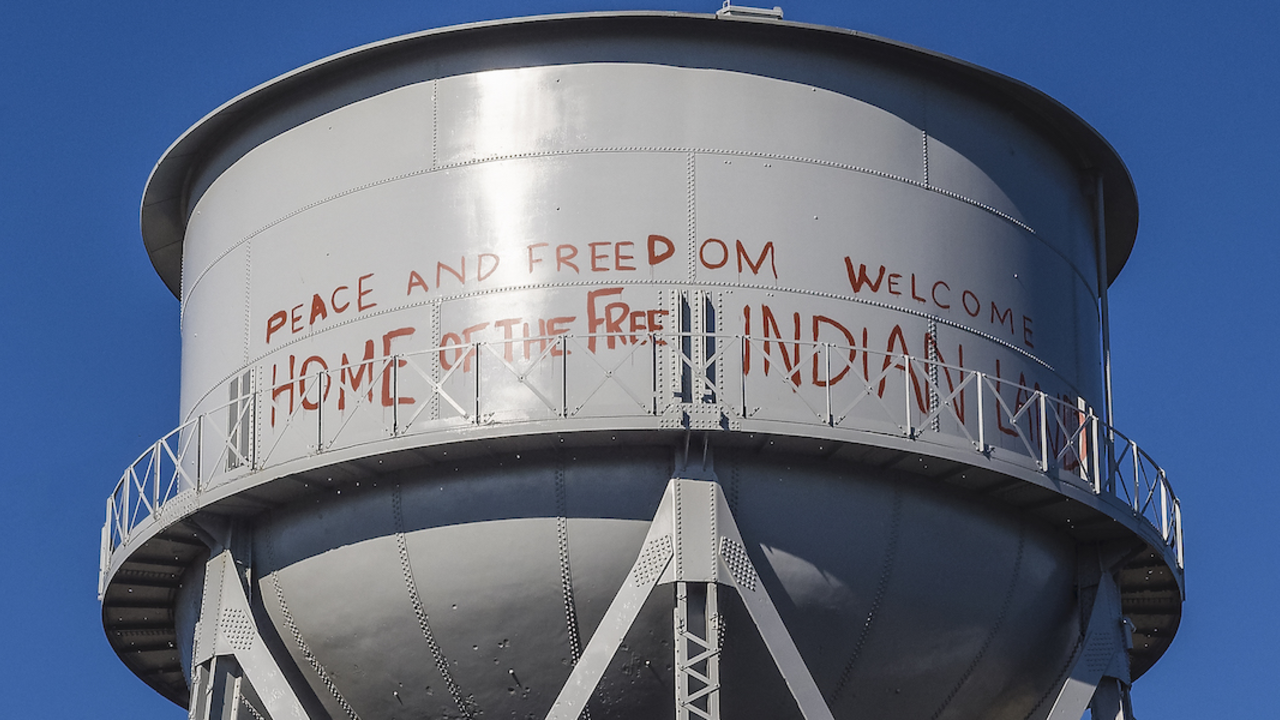
Johnny Bearcub Stiffarm:
“Every night on the Island was a study night. People would gather and talk about different treaties and strategies, like how do we create our community? What is the best way to have an American Indian culturally sensitive type of government with the strengths of the old ways, but flexible enough to embrace new ideas? There were a lot of young people there who were inspired, who had ideas and dreams of what their conception of utopia was. After being there for about six weeks, I was willing to lay my life down for the cause. It gave focus to the anger I had over the racism and prejudice at home on the reservation, and helped me direct that and pursue higher education."
“If you look at the people that were kids and adults here on Alcatraz during the Occupation, many of them went on to get higher degrees. They became lawyers, doctors, social workers, judges. Many of them served on their tribal councils, started their own newspapers and radio stations—a lot of them surpassed what anyone had expected of them."
“What happened here at Alcatraz was not the first American Indian radical activity. There were many more out there, but they were only focused on regionally by the media, so they were essentially kept contained. When Alcatraz happened, because of the world press, we just blew that right out of the water. And no one could uncap it once it was out.”
Johnny Bearcub arrived on Alcatraz Island during the occupation just after she had graduated high school, expecting just to spend a few days. But when she started talking to the different students, learning more about their passion and commitment to what they were doing, she ended up staying for 10 months and becoming a part of the cause.
She went on to graduate from Brigham Young University and earn her law degree from University of Minnesota School of Law. Her experiences on Alcatraz catalyzed a career focused on advocacy. She became a prominent liaison for various Indian Nation entities in local government and beyond.
Amplifying the story of the occupation with the help of the National Park Service
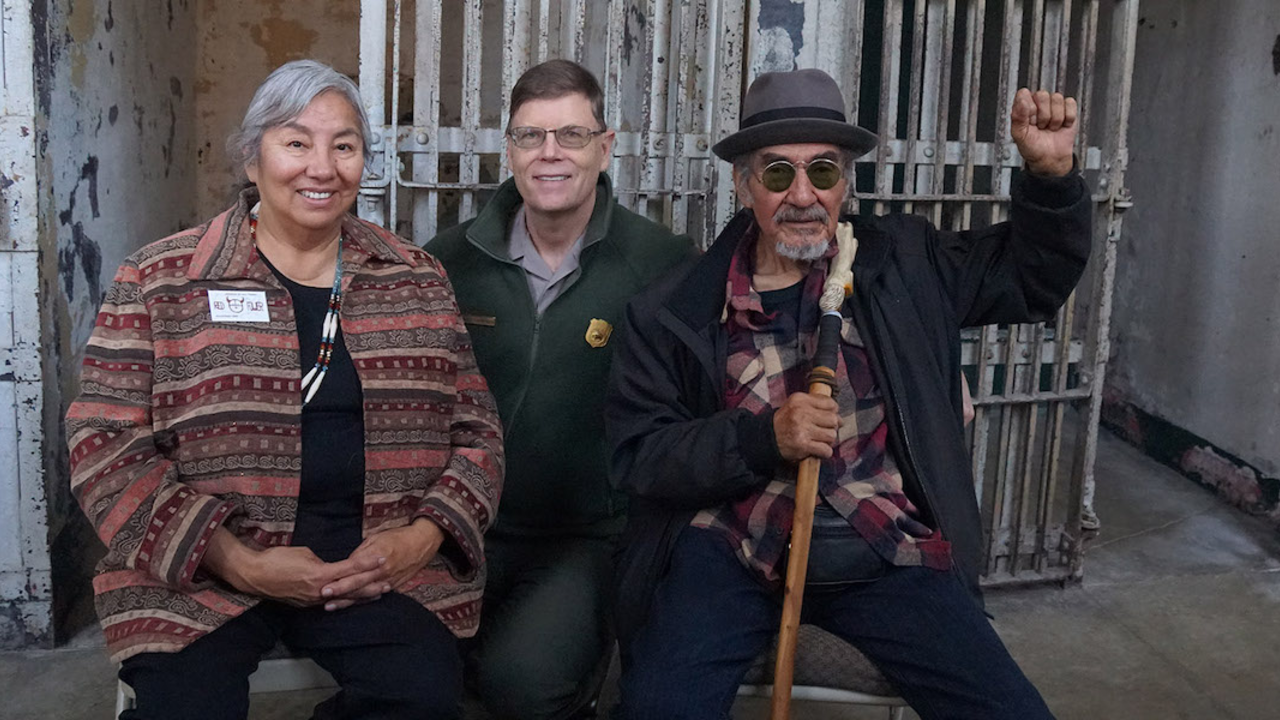
Eloy Martinez is an Alcatraz Occupier from the Chicano and Southern Ute Nation from the four-corners area of Colorado:
“I started talking to some of the rangers and realized they didn’t know about (the Occupation), so I started bringing them books and talking to other folks. I found that if I gave a little bit, they’d give a little bit."
“When they told me that the Bohemian Paint Company would be painting over the political slogans on the island, I protested that there were no Indians, no originals doing the repainting. They kept telling me that historical stuff was the whole thing with the National Parks; well, those slogans are historical. That’s our stuff. ‘You aren’t touching it,’ I said.”
After being brought into the movement by Richard Oakes, Eloy Martinez supported the Occupation throughout its duration, bringing vital supplies to the occupiers living on the island. “I was the gopher,” he says.
During the early 1980s, Eloy worked to bridge the gap between the history of the Occupation and the National Park Service. He started talking to rangers about what had happened, and realized no one knew or was telling the story of the Occupation. Although he was wary of trusting anyone in uniform, he started sharing the story, and came to realize that as he shared, the park service reciprocated by amplifying the message.
He spoke out against a plan to paint over original political slogans from the Occupation, and ensured that original occupiers were involved in restoration efforts. He’s worked to bring indigenous youth programs like the Canoe Journey to Alcatraz, and more generally, help the indigenous community feel welcome on Alcatraz by reminding them—and the National Park Service—that it’s part of their heritage.
Eloy has stayed in the Bay Area, living in the East Bay and returning to Alcatraz regularly to share the story and message of the Occupation with thousands of park visitors each year.
(This was compiled from interviews conducted by Maritte O'Gallagher and Ryan Curran White.)

